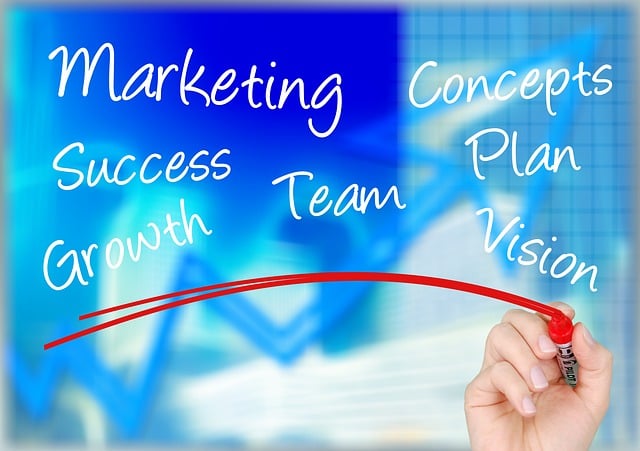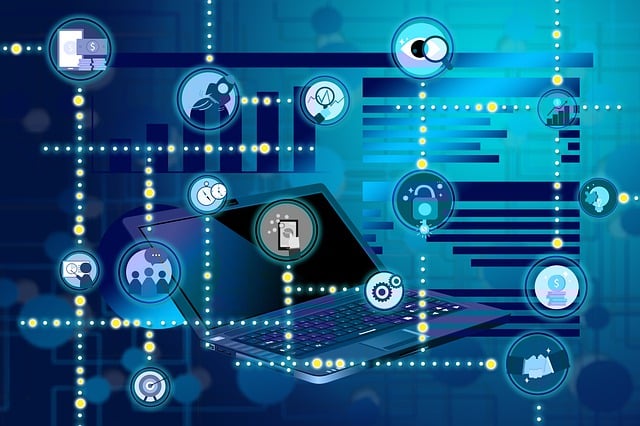Digital Twin technology, enhanced by AI, is revolutionizing industrial operations with predictive analytics and proactive maintenance. In hospitality and retail, AI algorithms optimize customer experiences through dynamic pricing and personalized promotions. Real-time data processing via edge computing and 5G further enhances efficiency gains already demonstrated in manufacturing, healthcare, and smart cities, promising smarter, more resilient business models.
“Unleash the power of AI with Business Digital Twin Technology, revolutionizing operations. This comprehensive guide explores the transformative potential of this innovative approach. We delve into the intricate world of AI, focusing on its pivotal role in AI-driven table turnover optimization. From understanding the fundamentals to uncovering real-world case studies, this article offers a strategic overview. Discover how AI optimizes processes, enhances efficiency, and drives business growth through digital twins. Explore future prospects and unlock the full potential of this cutting-edge technology.”
- Understanding AI Business Digital Twin Technology: A Comprehensive Overview
- The Role of AI in Table Turnover Optimization: Strategies and Benefits
- Implementing AI-Driven Digital Twins: Case Studies and Future Prospects
Understanding AI Business Digital Twin Technology: A Comprehensive Overview

AI Business Digital Twin technology offers a revolutionary approach to optimizing operations and gaining a competitive edge in various industries. At its core, this innovative concept involves creating digital replicas or twins of physical assets, processes, or even entire business systems. These digital twins are not mere simulations but dynamic models that mirror their real-world counterparts in every detail, from equipment and machinery to production lines and supply chains.
By leveraging machine learning algorithms and vast amounts of data, AI enhances the capabilities of digital twins. It enables businesses to predict performance, identify bottlenecks, and optimize processes before they even occur in the physical world. For instance, in manufacturing, an AI-driven digital twin can anticipate equipment failures, leading to reduced downtime and increased productivity through proactive maintenance. This technology goes beyond simple monitoring; it facilitates table turnover optimization by providing actionable insights to streamline operations, enhance efficiency, and ultimately drive business growth.
The Role of AI in Table Turnover Optimization: Strategies and Benefits

In today’s digital era, AI-driven table turnover optimization is revolutionizing business operations, particularly in hospitality and retail settings. By leveraging machine learning algorithms, businesses can analyze vast amounts of data to predict customer behavior and preferences. This allows for dynamic pricing strategies, personalized promotions, and efficient inventory management. For instance, an AI system can identify patterns in customer choices, enabling a restaurant to optimize its table allocation by offering reservations at peak times at competitive rates while ensuring a balanced distribution throughout the day.
The benefits of such optimization are multifaceted. It leads to enhanced customer satisfaction through improved service quality and accessibility. Simultaneously, it reduces waste and operational costs by minimizing underutilized resources. Moreover, AI-driven strategies provide businesses with real-time insights, enabling them to adapt swiftly to market changes and competitive dynamics. This agility ensures that companies remain relevant and profitable in a dynamic business landscape.
Implementing AI-Driven Digital Twins: Case Studies and Future Prospects

Implementing AI-driven digital twins is transforming industries, offering a future-proof approach to optimize processes and enhance decision-making. Case studies across manufacturing, healthcare, and smart cities demonstrate significant improvements in efficiency and cost reduction. For instance, a study by GE showed that AI-powered digital twins cut equipment downtime by 30% and increased production output by 25%. In healthcare, digital twins are used to simulate patient scenarios, enabling doctors to practice rare cases and improve outcomes.
Looking ahead, the integration of edge computing and 5G technology promises even more advanced AI-driven table turnover optimization. Real-time data processing at the source will enable faster, more accurate insights, leading to swifter responses to changing conditions. This evolution is set to redefine industries’ operational capabilities, paving the way for smarter, more efficient, and resilient business models.
AI-driven digital twin technology is transforming business operations, with a particular impact on table turnover optimization. By leveraging machine learning algorithms and real-time data, companies can create dynamic digital replicas of their physical assets and processes, enabling efficient decision-making and significant improvements in performance. As demonstrated by successful case studies, implementing AI-driven digital twins offers numerous benefits, including enhanced productivity, reduced downtime, and improved customer satisfaction. Looking ahead, the future prospects for this technology are promising, with continuous advancements in AI capabilities set to further revolutionize table turnover optimization and beyond.
